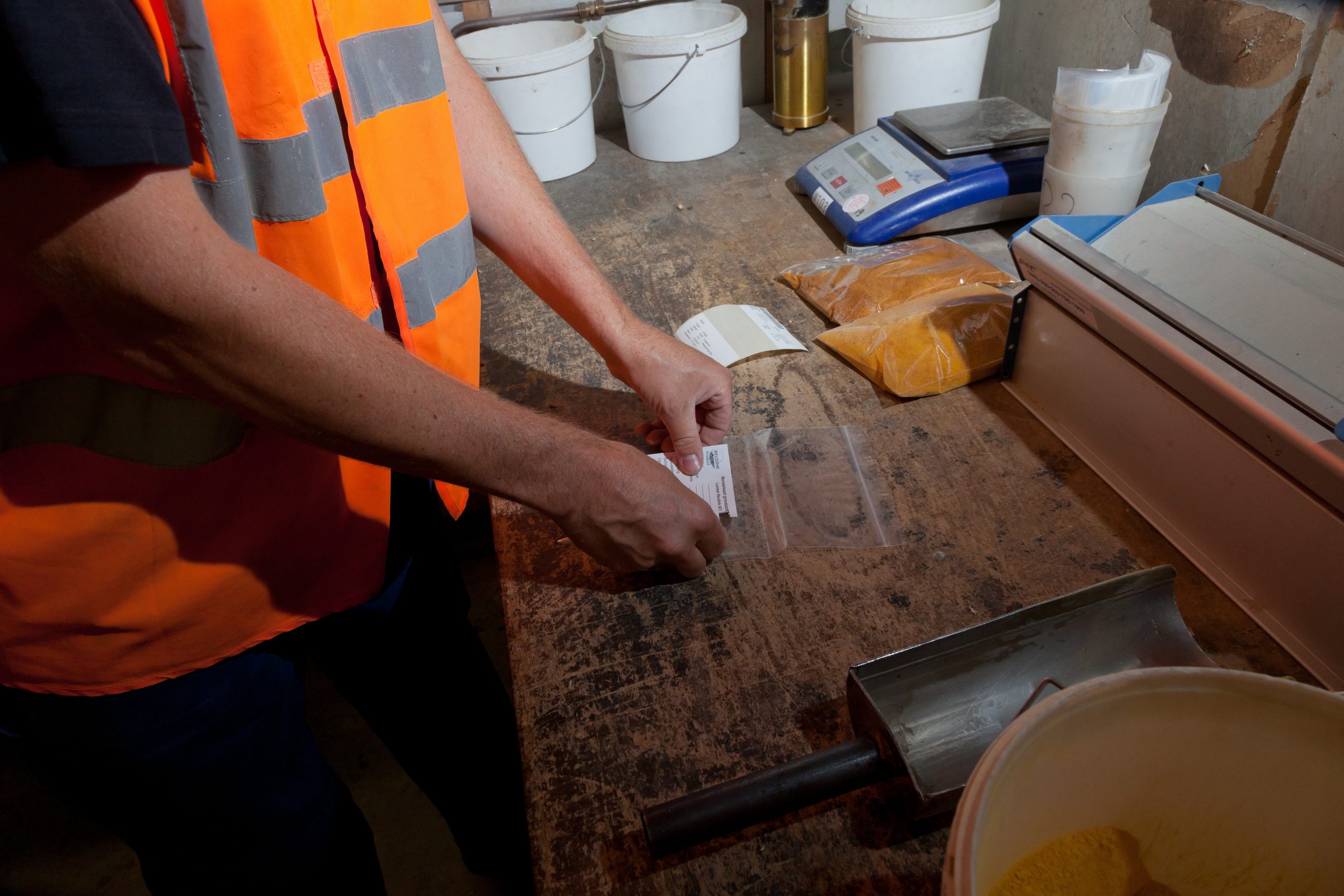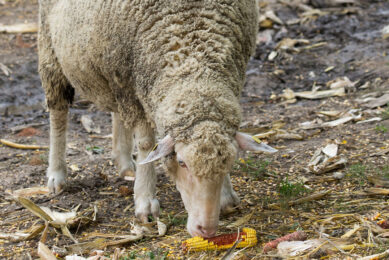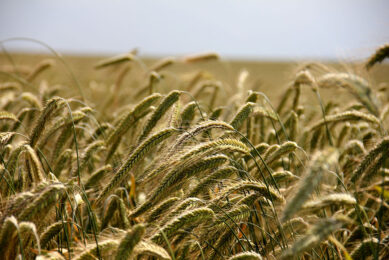Safe feed: A guarantee for good results

Animal feed needs to be protected against the risks of bacterial contamination, which can cause a loss in nutritional value and hence pose a threat to animal health and the food chain.
The rise in the price of raw materials makes animal feed a very valuable commodity. Given that microbial contamination is the main cause of deterioration in feed, and happens at a very frequent rate, effective protection against microorganisms is clearly essential in order to maintain the high value of the materials. Failure to do this results in microbial proliferation and impairment of the nutritional value of the feed, and consequently of livestock performance, and it also poses a threat to animal health and the food chain.
Causes of feed contamination
There are many causes of microbiological feed contamination. We explain them in further detail.
Arrival of raw materials
The first one is the input of contaminated raw materials. Clearly, the quality of the raw materials on arrival at the feed plant depends mainly on the good practices of the supplier. However, it is equally clear that some raw materials are more susceptible to microbial contamination than others. They are usually classified into three groups according to this risk. The high risk groups includes: soy meal, soybean husk, fishmeal, flour and cotton seed, wheat bran, rapeseed meal, etc. Raw materials with medium to high risks are cereals in grains, cereal by-products, fibrous foods, etc. Products that are considered low risk are carbonates, phosphates, micro-ingredients, etc.
Storage conditions
A second cause of feed contamination is incorrect storage conditions of raw materials. Microbial proliferation in silos can be due to incorrect or inadequate cleaning and disinfection procedures, as well as environmental conditions (temperature and humidity) which favour microbial growth in the whole silo or in specific areas (hot spots).

Cross-contamination
Despite thorough cleaning, in a feed mill cross-contamination is unavoidable. The continuous circulation of feed through the manufacturing circuit results in detectable traces of the preceding batch in the batch in manufacture, which can cause cross contamination by microbial pathogens. To avoid possible intoxication of livestock, the following measures are fundamental: Use of incompatibility tables; implementation of a manufacturing order to avoid cross contamination; thorough cleaning of all parts of the manufacturing circuit, including circulation of rough materials through the circuit to eliminate adhesions in inaccessible areas to avoid possible intoxication in animals attributed to cross-contamination. The transport phase must not be forgotten here either: All efforts to maintain the high microbiological quality of the feed may be lost due to poor hygiene conditions in the truck that transports the feed from the feed mill.
Figure 1 – Percentage of dust samples and Salmonella-positive raw materials/feed according to their location.

Cleaning
The fourth cause of feed contamination is inadequate cleaning of surfaces and equipment. Dust is the main source of contamination by Salmonella in feed mills (Miles, 1995), more than contamination of raw materials or feed (Figure 1). The mixer and the receiving pit are the parts of the equipment with the highest risk of crusting or dust accumulation, so they require special attention, and frequent, thorough cleaning. Poor hygiene conditions in these facilities may permit entry of microbial pathogens to the feed mill, as well as proliferation of microorganisms in later stages of the manufacturing process.
Recontamination of feed
Agents external to the manufacturing process may often come into contact with feed as a result of deficiencies in the facilities. Birds, insects, rodents, pets, etc. are relatively frequent in feed mills and farms and it should be taken into account that many may be carriers of Salmonella spp. and other pathogens. To avoid this risk of contamination by these external agents, it is essential to implement a good facility maintenance plan (preventive and corrective), a good cleaning plan, and a good DDD plan (disinfection, pest control and disinfestation).
Figure 2 – Effect of the thermal process through Salmonella along the feed manufacturing plant.

Application in the mixer
In the case of pelleted feed manufacturing, relying exclusively on heat treatment to prevent microbial contamination is not sufficient (Figure 2). Although pelleting temperatures could be critical for some microorganisms, this process does not eliminate pathogens (it only decreases the quantity) because its effectiveness depends on several factors, such as temperature, humidity, time, microbial load and the resistance of the bacterial strains involved. Moreover, the feed remains totally unprotected against possible recontamination, as no residual protection is used after pelleting, so in order to deal effectively with microbial contamination, the additional use of preservatives is required, preferably formaldehyde-based, as this is undoubtedly the most effective active substance suitable for use in the feed industry.
To ensure the fullest possible coverage of contamination from all the different sources mentioned above, the best dosage sites are the receiving pit and the mixer. Application at the receiving pit reduces, or may even eliminate, the initial microbial contamination which may have entered the feed mill premises. Application in the mixer reduces or eliminates microbial contamination that may have proliferated during storage of raw materials (microclimates which favour microbial growth are frequently formed in certain parts of the silo) and which typically result in the formation of crusts on the blades and walls of the mixer. This dust and crusting in the mixer is precisely where Salmonella is detected in a high number of samples, as seen in Figure 2.
It must be also taken into account that the dosage itself is just as important as the product applied, as insufficient dosing, or incorrect spraying will not allow the product to impregnate the feed mass adequately, and the product will consequently not have the desired effect. The calibration and continuous maintenance of the dosing equipment is therefore indispensable in order to guarantee the success of the treatment.
Figure 3 – Factory Control Points (CP) where surface samples are recommended for the control of microbiological contamination.

Conclusions
Maintenance of good hygiene conditions in the feed is fundamental for good animal health, and is the main factor which contributes to optimum performance. There are many causes of microbiological contamination of feed: entry of contaminated raw materials, poor conservation of raw materials, cross contamination, poor cleaning, recontamination of feed, etc.
Heat treatment is ineffective in dealing with microbial contamination and does not offer residual protection against possible recontamination after pelleting, which requires application of preservatives. Formaldehyde is the most highly recommended of all active substances used as preservatives in animal feed, for its high level of effectiveness. The application site, type of spraying, calibration and maintenance of the dosing equipment are all as important as the product used itself in guaranteeing the effectiveness of a treatment. In conclusion, continuous monitoring of microbiological hazards in the feed mill is essential, through surface sampling and implementation of preventive and corrective measures, which decrease and try to prevent, microbiological contamination (Figure 3).
Join 26,000+ subscribers
Subscribe to our newsletter to stay updated about all the need-to-know content in the feed sector, three times a week. Beheer
Beheer









 WP Admin
WP Admin  Bewerk bericht
Bewerk bericht